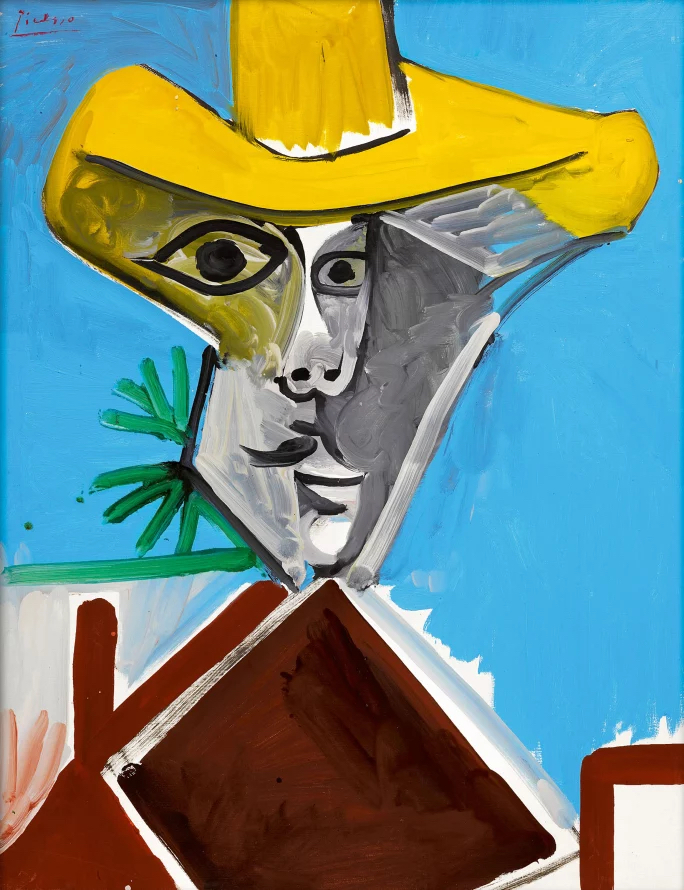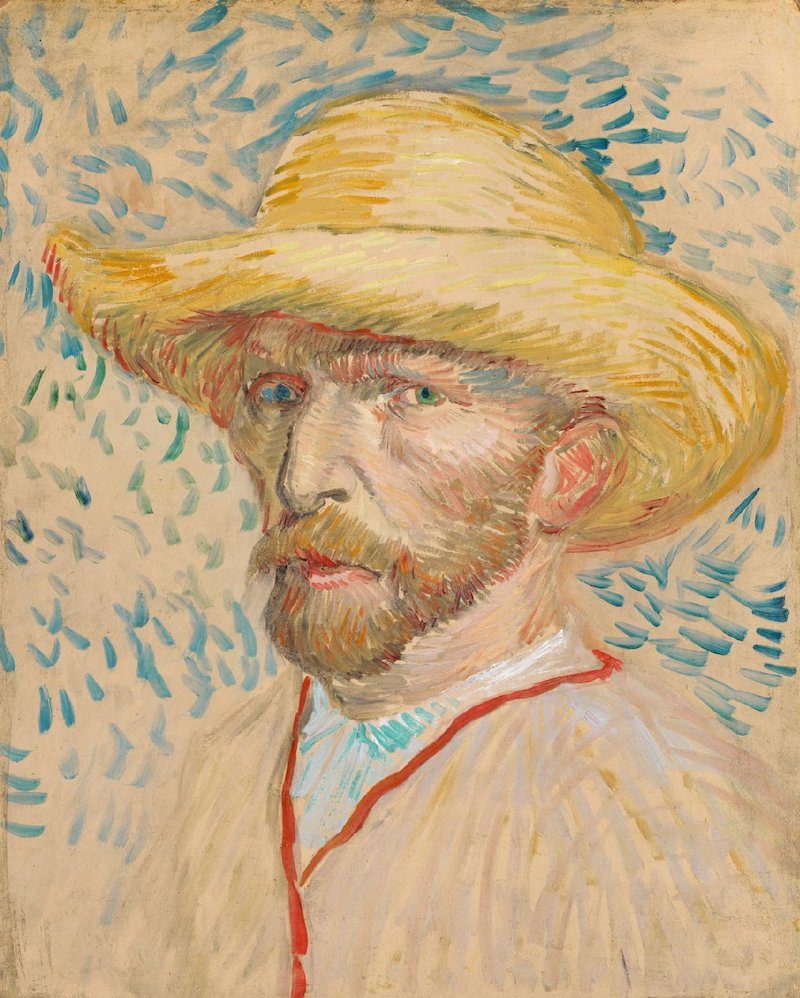Buste d'homme, 1969 by Pablo Picasso

Picasso painted many big canvas of musketeers wielding swords in late 1960s. The musketeer was one of the major themes in the artist's late work and one of the many archetypes that appeared in his works. By deliberately identifying himself with the greatest artists of the Western canon near the conclusion of his career, Picasso chose the iconography used by Old Master painters like Rembrandt and Diego Velázquez.
The Golden Age of Painting
Picasso was able to explore the spirit of a bygone era thanks to the musketeer as a motif and break free from the constraints of modern subject matter. These figures reflected the impact of Velázquez, Rembrandt, and Rubens on Picasso's art and represented the courtly manners of the Renaissance gentleman as well as the height of painting. Picasso spent a significant amount of time and energy in the 1960s reinterpreting and studying the Old Masters, an endeavor that allowed him to further cement his relationship with some of the greatest painters in art history.
According to his wife Jacqueline Roque, the musketeer series began "when Picasso started to study Rembrandt," but his admiration for other important Renaissance figures, such as Shakespeare, also had an impact on how these characters looked. At the time, Picasso seldom left his rural home outside of Mougins since he preferred to spend his time immersed in the great works of art. He was concentrating on reinterpreting the old masters, which confirmed his relationship to the greatest artists in history.
Picasso's Musketeer as Self Portrait
In Picasso's iconography, a new and concluding figure first appeared in 1966. This figure dominated Picasso's final phase and eventually served as its mascot. This nobleman of the Golden Age was a half-Dutch, half-Spanish musketeer who wore elaborately embellished attire.
Through out the 1960s, Picasso started focusing on this subject and produced a number of engravings and works on paper, followed by a number of canvases featuring the musketeer. The musketeer evolved into a multi-dimensional character as Picasso worked on this series in the late 1960s and early 1970s, displaying a variety of personalities such as card players, musicians, and pipe smokers, and illuminating the artist's own experiences as a bon vivant.
Van Gogh: Patron Saint
Van Gogh is the least frequently mentioned of all the painters Picasso connected with, yet he was arguably the one who meant the most to him in his final years. He was always spoken of as his patron saint and always with the utmost respect and sympathy, never with any of his customary cynicism or ridicule. Like Cézanne earlier in Picasso's life, Van Gogh was sacred.

Picasso's musketeer would occasionally wear a yellow hat; its importance was connected to another area of the artist's work. Picasso appears to have been thinking most frequently about Van Gogh around the middle of the 1960s. Although Picasso used Renaissance painters as inspiration, it is apparent that the Dutch artist was a major influence on his interest in shrouded self-portraits and the stylistic vivacity of his later works. Picasso's brushstrokes have a richness and spontaneity that are strongly evocative of Van Gogh; it's as though by channeling the spirit of the artist, Picasso found renewed energy for his own work.
Picasso's self-portrait in the iconography of the musketeer demonstrates the artist's self-awareness in his later years. Picasso's Spanish ancestry and his longing for the exuberance of his youth were suggested by the figure of the musketeer at the end of his life.
















